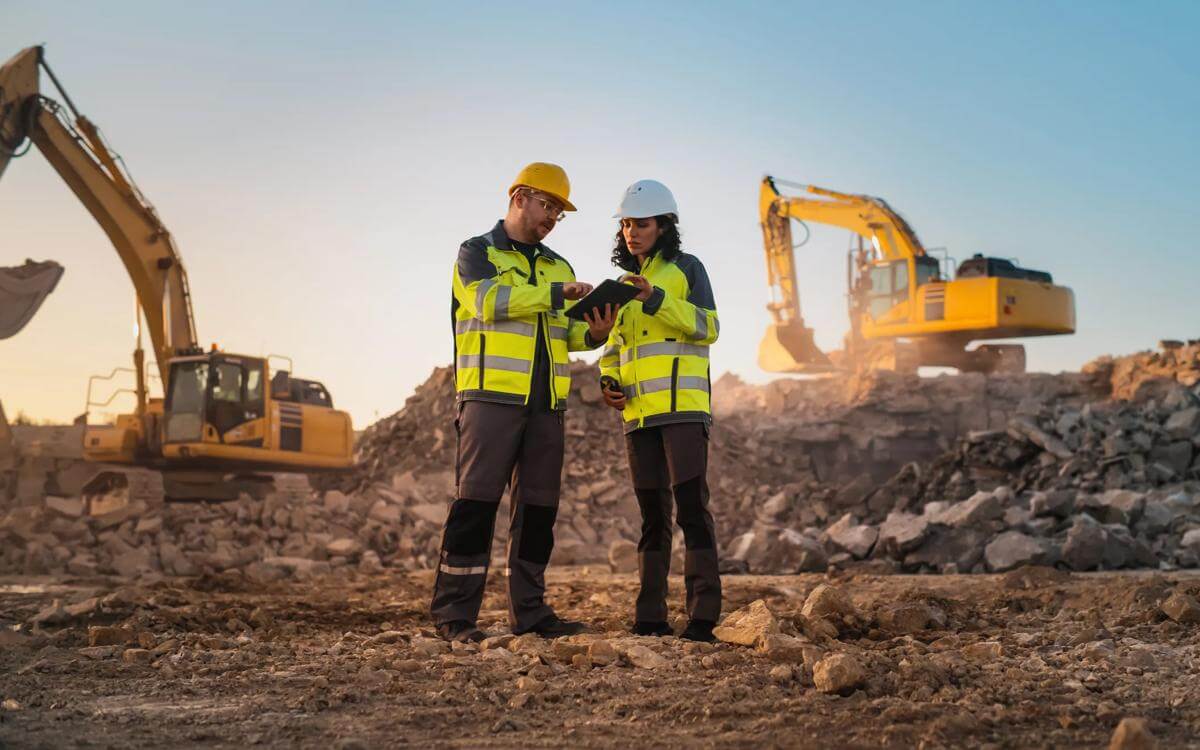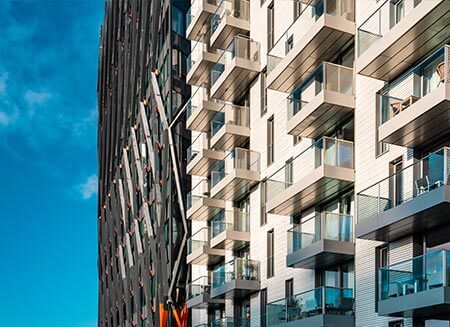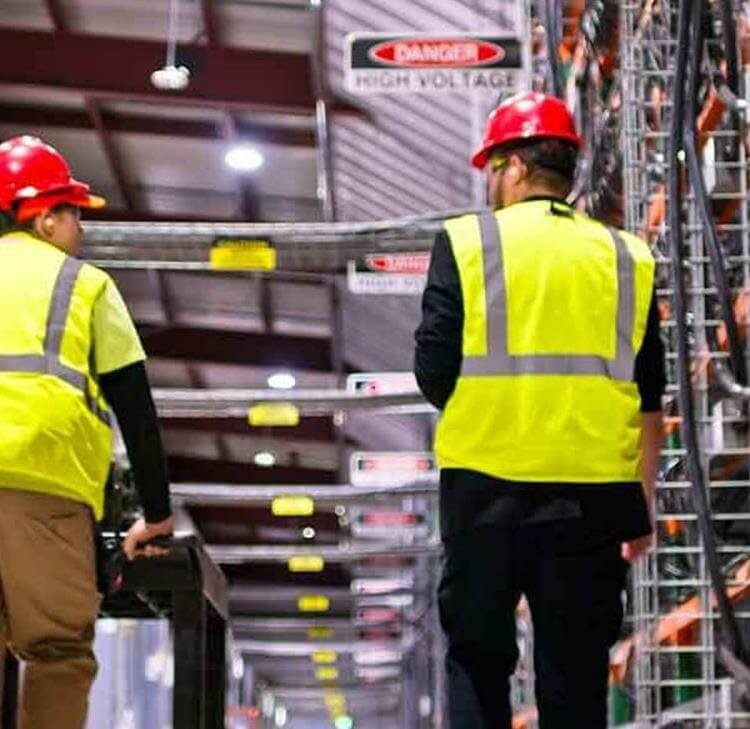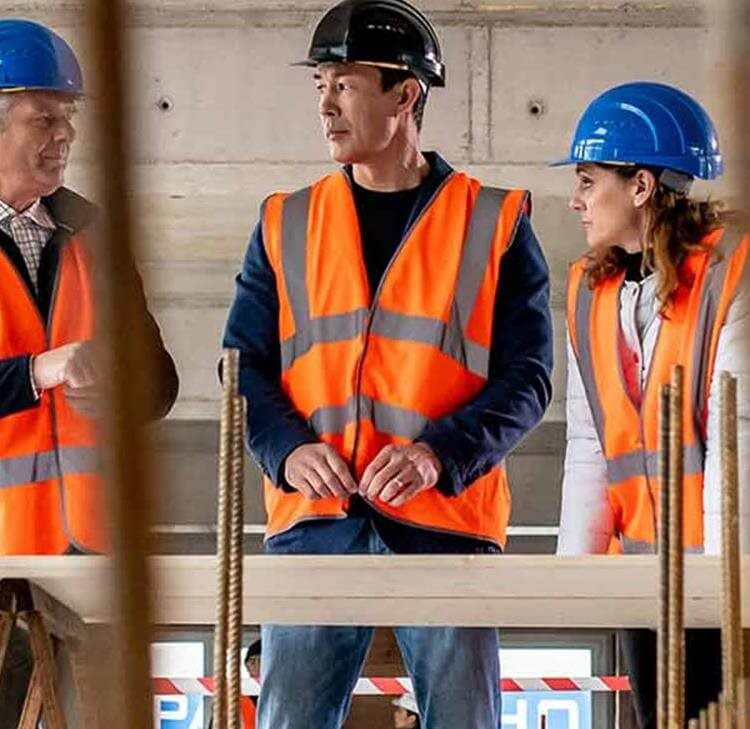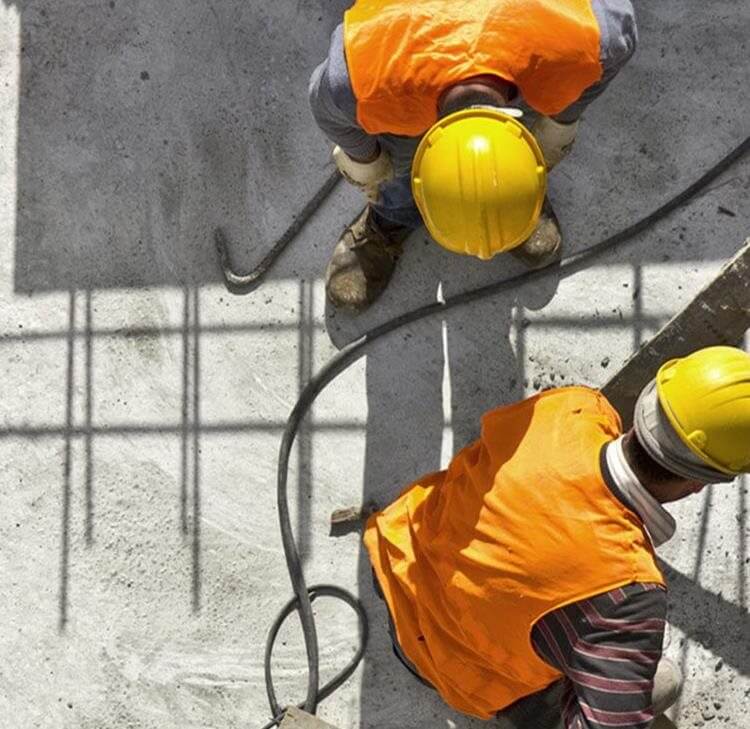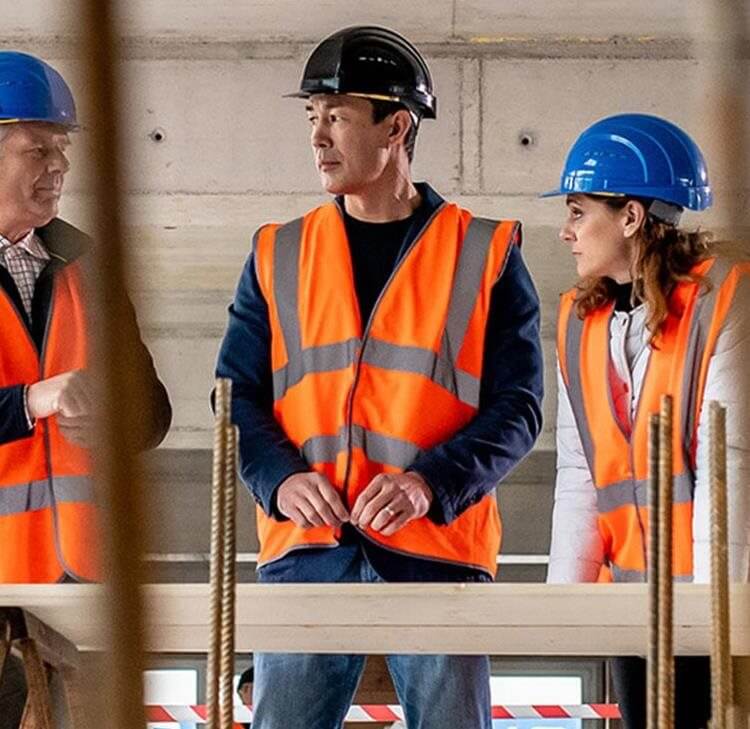The Building Safety Act 2022 received Royal Assent on 28 April 2022 (the Act). Known as the Building Safety Bill (the Bill) during its passage through Parliament, the government has described the reforms introduced by the Act as “the biggest changes to building safety regulation in a generation”.
For once, the hype is justified. This is the biggest change to the way that the construction industry operates, and for anyone involved in planning and property management or ownership, since the introduction of the Construction (Design and Management) (CDM) Regulations in 1994.
Originally 218 pages when introduced to Parliament, the Act is long and has been subject to numerous amendments. However, whilst the Act has received Royal Assent, it’s not yet in force.
The timetable for implementation is not entirely clear, although the government has previously stated that there’ll be phased implementation throughout this year and next.
We’ve found it helpful to consider the Act by reference to its two broad purposes:
- to provide a statutory scheme for the remediation of buildings which have issues resulting from historic problems in the construction industry (and the government has indicated that these provisions will come into force in September 2022); and
- to ensure those problems don’t happen again (and the government has previously indicated that the legislation introducing the gateways and the golden thread will come into force by the end of 2022)
This article addresses the first issue above, and considers two elements of the Act which impact on buildings completed prior to the Act coming into force as law, being:
- the extension of limitation periods in relation to cladding products and under the Defective Premises Act; and
- Building Liability Orders, which seek to address the issues caused by the winding up of corporate entities, and special purpose vehicles (SPVs) in particular, after completion of a project.
We’ll release a further article shortly considering the second issue above, and we’ll also hold a seminar in the early summer to discuss the issues raised by the Act in greater detail.
The background to the Act
The Act arose out of the horrendous events of 14 June 2017 when a fire broke out in the kitchen of a fourth-floor flat in the Grenfell tower.
The fire spread to the external cladding and insulation and, due to the combustibility of the cladding, insulation and “stack effect”, engulfed the tower in flames. 71 people died, and many were injured.
The next day, the government ordered an inquiry into the events with the immediate priority being “to establish the facts of what happened at Grenfell Tower in order to take the necessary action to prevent a similar tragedy from happening again”.
Phase 1 of the Grenfell Inquiry concluded that the primary cause of the fire was the Aluminium Composite Material (ACM) panels with which the tower was clad, which comprised a layer of highly combustible plastic held between two thin aluminium skins.
Whilst it was not the Inquiry’s original intention to include in Phase 1 an investigation into the extent to which the tower complied with Building Regulations (the Regulations), it found there was compelling evidence the external walls of the building not only failed to comply with the Regulations, but that the external walls didn’t adequately resist the spread of fire having regard to the height, use and position of the building.
On the contrary, the construction of the external walls actively promoted it.
The government took numerous further steps following the tragedy, including an independent review into Building Regulations and fire safety with a particular focus on high-rise residential buildings (the Hackitt Review).
This was issued in May 2018, and its conclusions were sobering, identifying extensive issues in the construction in relation to fire safety, including fire safety doors not performing as required, and companies not keeping proper audit trails.
The Hackitt Review also reported that even after the Grenfell tragedy, there were still some in the industry who either didn’t understand or were unaware of the Regulations.
In response to the Hackitt Review, the government
- introduced the Building (Amendment) Regulations 2018 which came into force in December 2018 and banned combustible materials in external walls over 18 metres, and
- launched its ‘Building a Safer Future’ policy in December 2018.
The consultation on the policy ended in July 2019 and the government published its response in April 2020.
Following the government’s response, the first draft Building Safety Bill was published in July 2020 and ultimately became the Act, which is the focus of this article.
More generally, the Grenfell Inquiry brought into question the use of cladding within the construction industry. This has led to disputes over whether cladding works have been carried out in compliance with the Regulations, and who should pay the cost of removing and replacing cladding.
As these issues are relevant to certain elements of the Act, a brief summary of the application of the Regulations to cladding works is set out as follows:
The Regulations and cladding works
The Regulations apply in England and Wales to “building work” carried out in relation all types of building, whether domestic, commercial or industrial, with only limited exceptions.
The Regulations are designed to set broad outcomes which buildings must achieve, rather than setting out prescriptive rules as to what must be done, or long lists of banned materials. It’s then up to the industry to decide how to meet these outcomes.
The Regulations are supplemented by detailed technical guidance contained in the “Approved Documents”, which are labelled Parts A to P and explain how the Regulations may be satisfied. The guidance is not legally binding.
There’s long been confusion surrounding certain parts of the Regulations, including in relation to cladding (which as set out above was the primary cause of the Grenfell tragedy).
As a result, the Grenfell Inquiry appointed façade expert Jonathan Sakula to answer questions about a variety of topics, including in relation to the fire performance of the façades of high-rise buildings.
Mr Sakula’s expert report is available on the Grenfell website and makes for sobering reading. He highlighted various issues with the Regulations which are relevant to cladding and fire safety. For example:
- Mr Sakula concluded the Building Regulations are not sufficiently clear. For example, paragraph 12.7 of Approved Document B states that in a building over 18 metres with insulation product, any filler material used in the construction of the external wall should be of limited combustibility. Mr Sakula considers that the words “filler material” are unclear, but are likely intended to refer to gap fillers, such as expanding foam fillers, and not to the core of an ACM panel.
However, in the days following the Grenfell tragedy, the Department for Communities and Local Government wrote to the chief executives of local authorities and housing associations and stated: “For the avoidance of doubt; the core (filler) within an Aluminium Composite Material (ACM) is an “insulation material/product” (our emphasis).9 The lack of clarity such as that identified by Mr Sakula demonstrates that compliance with the Regulations can be, at best, difficult.
- Secondly, Mr Sakula concluded there’s been a historic problem in the construction sector with an over-reliance on the certification and technical literature provided by third parties, such as Local Authority Building Control (the LABC) or the British Board of Agrément. Whilst such certificates and technical literature may indicate the suitability and limitations of construction products, this will often be subject to qualification in relation to a range of issues including fire safety.
However, Mr Sakula observed that those qualifications aren’t often recognised within the construction sector, with manufacturers obtaining certification from the LABC for a certain product and then marketing the product as meeting the Regulations without reference to those qualifications. This could in turn lead to issues with the use of those products in practice,11 and problems with the design, construction and signing off of buildings.
The Act’s extension of limitation periods
A limitation period is the period within which a claiming party must formally commence a claim at court. If a claim isn’t brought within the limitation period, the party defending the claim generally has a complete defence.
Defective Premises Act 1972
The Act retrospectively extends the limitation periods for certain claims in relation to cladding products and under the Defective Premises Act 1972 (DPA). The DPA relates to claims for defective building works on a dwelling, and applies to all dwellings in England and Wales, not just to flats in high-rise buildings.
Under section 1(1) of the DPA, contractors, developers and constructional professionals owe a duty to ensure work carried out on a “dwelling” (i.e. a residential property) is done in a workmanlike or professional manner, with proper materials and so that the dwelling will be fit for habitation when completed. This includes conversions as well as new builds.
A claim for breach of the section 1 duty may be brought by the person(s) who commissioned the work and by every person who subsequently obtains an interest in the dwelling.
It’s not necessary for there to be a contractual relationship between the claimant and the defendant for a claim to be brought under the DPA.
Prior to the Act, a claim under the DPA had to be connected with the “provision” of a dwelling, meaning its original construction or conversion. The Act does two things:
- first, it expands the right to claim under the DPA to cover any work undertaken on an existing dwelling, provided that work was done in the course of a business (so including maintenance and refurbishment); and
- secondly, for claims which accrued prior to the Act coming into force as law, the Act extends the limitation period to 30 years from the date of completion of the dwelling to which the claim relates.
Based on the timetable previously published by the government, it’s expected these provisions will take effect within the next 12 months. If so, this will mean:
- claims will be able to be brought in relation to dwellings which were completed as long ago as 1992; and
- for a dwelling completed this year (and prior to the Act coming into force as law), the limitation period will not expire until sometime in 2052.
For claims which are close to expiry of the 30-year limitation period, there’s a 12-month buffer (known as the “initial period”) which will extend the limitation period further following the relevant provisions coming into force as law.
Importantly, liability under the DPA doesn’t require negligence but is instead strict. This means if a building isn’t fit for habitation due to defective work, a liability will arise and a party at fault will not be able to defend the claim by saying that it followed established practice at the time.
In relation to cladding that has rendered a building not fit for habitation, for example, it wouldn’t be a defence to say the Building Regulations in force at the time of construction weren’t sufficiently clear as to whether “filler material” included ACM panels or not.
The question will be whether or not the dwelling in question was fit for habitation as a result of the work done.
Building Act 1984
Section 38 of the Building Act 1984 (1984 Act) provides a statutory right of action to anyone suffering damage as a result of a breach of the Regulations. Prior to the Act, section 38 of the 1984 Act hadn’t been brought into force. The Act does two things:
- first, it will give effect to section 38 of the 1984 Act; and
- secondly, it extends the limitation period for claims under section 38 of the 1984 Act from 6 years to 15 years.
The right of action under section 38 of the 1984 Act will apply to:
- any building (not just residential buildings); and
- any damage, including the death of or injury to any person.
Bringing into force section 38 of 1984 Act will give private individuals the right to claim compensation in the event they suffer loss as a consequence of non-compliance with the Regulations in relation to the construction or design of any building. This will be of concern to developers, construction professionals, contractors and insurers because:
- first, it enables claims to be brought in respect of any building and not just “dwellings”;
- secondly, it enables claims to be brought in respect of any damage and not just for the cost of repair; and
- thirdly, it seems likely that section 38 will be interpreted as imposing strict liability.
If that’s right, it will not be possible to argue as a defence that it was reasonable to believe that the work was adequate, nor will it likely be possible to contract out of the clause. Developers will need to prove that they followed building regulations at the time of construction (which is a defence many professionals are currently utilising in relation to fire safety).
Therefore, the scope of claims which may be brought under section 38 of the 1984 is extremely wide.
Cladding products
The Act also addresses some of the issues which were identified in the Grenfell Inquiry in relation to the manufacture, supply and use of cladding products. Under section 148, the Act introduces liability to pay damages for “personal injury, damage to property or economic loss” if:
- a person fails to comply with the draft Construction Product Regulations 2022 in relation to a cladding product; or
- a person “who markets or supplies a cladding product” makes a misleading statement in the marketing or supply of a cladding product; or
- a person manufactures a cladding product which is inherently defective; and
- the cladding product is attached, applied to, or installed in the external wall of a building which contains one or more dwellings; and
- this contributes to or causes a dwelling to become unfit for habitation.
As with the DPA, for claims which accrued prior to the Act coming into force as law, the Act extends the limitation period to 30 years from the date of completion of the cladding product works or dwelling to which the claim relates, whilst the limitation period prospectively is 15 years.
Again, there’s a 12-month buffer which will extend the limitation period further following the relevant provisions coming into force as law.
Importantly, section 148 is potentially wide enough to impose liability on:
- a contractor or construction professional whose use of a cladding product constitutes a failure to comply with a cladding product requirement;
- a developer who instructs the use of a cladding product in a way which constitutes a failure to comply with a cladding product requirement; and
- a contractor who makes a misleading statement in relation to a cladding product when supplying that product to an employer.
It follows a contractor (particularly in a design and build context), developer or construction professional facing liability for the use of a cladding product should be aware of the possibility of a downstream claim against the manufacturer or supplier of that product.
Building Liability Orders
Ordinarily, the principle of separate legal personality means the debts, liabilities and obligations of a corporate entity, such as a company or limited liability partnership, belong to and are personal to that entity and not its beneficial owners (shareholders), officers or directors.
This means if the entity is dissolved, a claimant will have no defendant against which to pursue a claim except in extremely limited circumstances.
This is a particular issue for claims in relation to legacy construction projects where a claim may exist under the DPA or the 1984 Act, but the passage of time means it’s likely the entity used to carry out the construction and development of properties may have been dissolved.
This is because many property developers use SPVs for such projects, and on completion of the construction and sale of development assets, the SPV will normally be wound up.
To overcome this, the Act introduces Building Liability Orders, which enable a claimant to pursue a financial remedy under sections 129 to 131 of the Act where:
- a corporate entity is subject to certain liabilities under section 38 of the 1984 Act, the DPA or as a result of a “building safety risk” (meaning “a risk to the safety of people in or about the building arising from the spread of fire or structural failure”); and
- the corporate entity was an “associate” of another corporate entity (meaning being controlled by another company (for example, parent companies) or if both are controlled by a third company (for example, sister companies). The definition of “control” is wide and includes overseas companies.)
A Building Liability Order may also be made if a corporate entity has been dissolved.
The liability which will be imposed under a Building Liability Order will be “joint and several” for any associate of the relevant entity.
This means the liability can be enforced against all or any of the associates against which the Orders is made, and in whatever share the court may determine.
The court will only be able to make a Building Liability Order if it’s considered “just and equitable to do so”. It’s not yet clear how this will be interpreted.
In the context of the Insolvency Act 1986, the courts have approached the interpretation of the equivalent term by meaning it is necessary to have regard to the full factual matrix in order to determine whether an order should be made. Our initial view is that it’s likely the courts will adopt a similar approach in relation to Building Liability Orders.
The wider impact...
...of extended limitation periods, Building Liability Orders and the government’s wider efforts to address historic issues.
The extended limitation periods under the Act expose contractors, developers and construction professionals to additional risks. Most obviously:
- some claims that were previously time barred no longer will be, due to the extended limitation periods; and
- corporate entities which weren’t previously subject to liability for the debts, liabilities or obligations of an associated or dissolved entity may face the risk of now being exposed to liability under a Building Liability Order.
This will doubtless force parties to review their work on legacy projects and consider what, if any, claims may now be brought against them.
Our experience is that most of this work has broadly already been done.
This is not the only issue, however. In particular, it seems inevitable that claims brought up to 30 years after the completion of a project — and in circumstances where limitation periods had previously expired — will face challenges.
At least some, if not all, personnel involved on the projects in question will have moved on from the defendant entity, making it difficult, perhaps impossible, for such entities to speak with those involved on the project at the time and obtain the evidence necessary to respond to any claim.
Similarly, but equally problematically, entities may well struggle to access relevant documents.
These documents may have been destroyed in accordance with document retention policies, making it difficult for the entity to obtain the evidence necessary to respond to a claim. Claimants will face similar problems, albeit not to the same extent given the approach taken by the Act.
More generally, the extended limitation periods are not a panacea for potential claimants.
The government has stated that the main purpose of the changes made in the Act are to help leaseholders who may only have become aware of the issues such as those presented by defective cladding after the Grenfell tragedy and many years post-expiry of the limitation period for any claim.
However, whilst the Act solves the limitation issue, there are other substantial barriers to claims being pursued:
- Given the passage of time, claimants may have trouble obtaining the evidence relevant to a claim, making the progress and resolution of such claims more difficult and expensive.
- There’s the question of who will foot the bill in the event of a successful claim. At least some defendants will not have the means to pay out themselves, whilst others may have ceased trading, entered insolvency, or been dissolved in the intervening period. A Building Liability Order will, of course, only be available on application to and at the discretion of the court. There’s no guidance as to the circumstances in which that discretion will be exercised, and it is of course no guarantee that the companies behind the SPV will have funds themselves.
- At the same time most professional indemnity (PI) policies now include some form of restriction relating not only to cladding, but fire safety generally, with blanket exclusions for fire safety now being commonplace. Until the recent softening of the market, many companies involved in cladding have been unable to obtain any insurance at a commercially viable price and had moved to a captive
insurance approach. Given that PI policies exist on a claims- made basis, there’s a real risk of successful claims resulting in limited pay outs (insurance not being available for defective work where the design was compliant).
Finally, the Act doesn’t address the question of funding. In particular, whilst leaseholders might now have the right to bring a claim, that doesn’t mean that they have the money to fund an action in the first place. Even if they have the resources to bring a claim, it’s likely to be against parties who are better funded and better placed to fight a lengthy legal battle. Whilst any litigation is expensive and uncertain, as set out above, compliance with the Regulations can be difficult to establish, further increasing the time and costs of any such dispute.
In short, the extended limitation periods and Building Liability Orders introduced by the Act don’t alone necessarily achieve the government’s objectives.
Building Safety Fund and Pledges
That said, the extended limitation periods and Building Liability Orders are not the only way in which the government is seeking to address the historic issues in the construction industry in relation to cladding and high-rise buildings.
It has introduced other practical measures to fund remedial work. In particular, the government has created the Building Safety Fund, which aims to protect leaseholders from the cost of addressing fire- safety risks, caused by unsafe non- ACM cladding systems on high-rise residential buildings.
This is funded by a combination of additional funds allocated to the Department of Levelling Up, Housing and Communities from the Treasury and a new tax and levy on residential property developers.
Further, the Secretary of State for Levelling Up, Housing and Communities Michael Gove, has written to and met with representatives of the residential property development and manufacturing industries, and called for developers to agree to make financial contributions to a dedicated fund to cover the full outstanding cost to remediate unsafe cladding on buildings between 11 and 18 metres, and more generally to fund and undertake all necessary remediation of buildings over 11 metres that they have played a role in developing.
We’ll address issues regarding the Building Safety Levy in our next article.
In addition, on 13 April 2022 the government announced that over 35 major developers had signed its Building Safety Pledge, committing them to repairing buildings that they’d developed or refurbished
in the last 30 years. The Pledge requires developers to:
- agree with the principle that leaseholders should not have to pay for any costs associated with life-critical fire-safety remediation work arising from the design, construction or refurbishment of buildings of 11 metres and above that they live in;
- agree to take responsibility to address life-critical fire-safety issues on all their buildings of 11 metres and above in England that they have developed or refurbished; and
- withdraw / reimburse claims already made against the Building Safety Fund and ACM Funds.
At the time of writing, no such deal has, however, been reached with construction products manufacturers. It seems it remains the government’s intention to do so.
Insurance
Finally, it remains to be seen how the insurance market will respond to the extended limitation periods under the Act.
In recent years, insurers have been wary of the construction industry for various reasons, including Grenfell, the collapse of Carillion, and a wider history of major insurance claims, leading some in the insurance market to consider that the regulatory frameworks on which they had relied to assure themselves that the firms and individuals they are insuring were competent, were in fact either flawed themselves, or not being followed by the industry.
In any event, the Construction Industry Council (CIC) is concerned that there’s a real risk that the insurance sector will continue to walk away from construction on the basis that the increase in level and extent of liability proposed by the Act, which will:
- render insurance cover impossible to obtain except possibly for a limited number of very large firms;
- disproportionally affect and penalise SMEs; and
- reduce the number of firms available to undertake work because smaller firms will no longer be able to afford to operate.
The CIC is concerned that this will in turn:
- impact on the government’s ‘Levelling up’ policy, in appearing to support key players largely located in the South East, and doing nothing to enable smaller firms in other areas to participate in the large amount of construction that’s urgently needed; and
- drive up construction costs across all sectors of the construction industry, including for housing, schools, hospitals, and other public sector construction programmes, as well as in the private sector.
It may be that these concerns are to some extent allayed by the current softening of the insurance market. It may also be that from a regulatory perspective, the forward-looking elements of the Act represent a good starting point in terms of addressing some of the issues in the industry. We’ll address these in our next article.
Contact

Tim Claremont
Partner
tim.claremont@brownejacobson.com
+44 (0)20 7871 8507

Gavin Hoccom
Partner
Gavin.Hoccom@brownejacobson.com
+44 (0)330 045 2413


